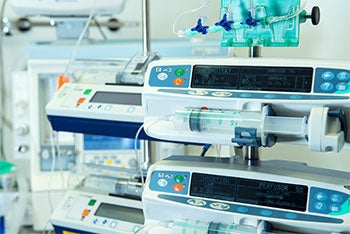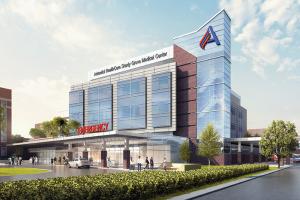Is now the time to purchase new health care equipment?
 |
| Rapid innovation in medical technology raises concerns on how and when to invest in new equipment. |
The need for expansion, more providers and more health care options has reached such a boiling point that health care facilities no longer can afford to wait to invest in new equipment.
In addition, the rapid changes in technology in the medical field have added another level of complication: health care professionals are wary of investing heavily in equipment because it becomes outdated so quickly. For this reason, a traditional equipment purchase no longer makes sense for many facilities, especially considering the million-dollar price tags that can accompany the latest technologies.
Financing health care equipment today
To ensure that facilities are equipped with state-of-the-art technology, today’s health care providers must find the best financing options for their businesses; specifically, options that give them low risk and low cost.
In the current financial market, lenders understand the demand in the health care industry, and recognize the value in medical facilities. Today, facilities can secure 100 percent financing for their equipment, along with a variety of financial structure options to fit their specific business needs and accommodate the specific equipment being acquired.
Options and best practices for financing health care equipment
Because patients will always select the most state-of-the-art facilities for their care, health care facilities must continuously upgrade their equipment in order to stay competitive. Based on this need, facility owners and managers should consider the type of equipment they are purchasing, as well as the equipment’s shelf life, when making a financing decision.
For example, if a facility is planning to complete a major expansion, such as building a new wing, using cash or a bond-raise is the most effective strategy, as this type of upgrade will likely remain relevant for 20 years or more.
Alternately, when it comes to items such as hospital beds or other non-technical equipment, these pieces will need to be replaced within 10 years or less. Because facility operators will always need to have these pieces, capital leases really are the best option. Capital leases function much like a traditional purchase, in that they allow the borrower to own the equipment at the end of the lease. That said, these lease structures are more advantageous than a traditional cash purchase because they give borrowers the opportunity to hold onto their cash and spread the cost of their equipment out over several years.
On the other hand, for technical medical equipment that must be replaced every three to five years (such as CT scanners, MRI machines, and anesthesia machines, among others) an operating lease is the most effective choice. With new technology continuously emerging in this arena, this financing structure allows facilities the flexibility to return their old, outdated equipment at the end of the lease and pursue new equipment. This helps facilities to ensure that they can remain competitive by always having the latest and greatest technology. Also, with an operating lease, borrowers will save money, as they only pay about 70 to 80 percent of the total cost of the equipment.
With all these options in mind, today’s facility owners and operators should take care to avoid “blanket financing” when it comes to their expansions and upgrades. Instead, each portion of these projects should be examined individually to determine which financing makes the most economic sense for each item. Considering the shelf life of each piece of equipment and tailoring the particular financing to the specific equipment will result in a more cost effective and strategic solution for any business expansion or upgrade.
Where to find health care equipment financing
Of course, capital leases and operating leases are only two of the many options available when it comes to financing equipment today. Every health care facility has its own unique business plan and needs, and facility administrators should take care to select a financial provider than can create the customized options that fit its individual needs.
Medical facility owners and managers must also be sure that the financial provider they select understands the specific needs of the health care industry. The costs associated with setting up new equipment can be steep and can require a heavy upfront investment.
To handle these costs, facility managers must ensure that their financial partner can provide funding not only for the equipment itself, but also for vendor costs associated with the delivery, installation, and even inspection of the new equipment. Many large financial providers won’t manage the coordination that goes into these upfront vendor payments, and therefore will not fund this portion of an equipment finance transaction. While some finance providers do offer to pay a portion of the costs back to the health care facility at a later date, the initial cost can strip a facility of much needed cash. This can be especially detrimental when setting up an entirely new health care facility, where unexpected costs run high. Saving cash by using a financier that will handle progress payments on a facility’s behalf will go a long way in terms of the overall set up budget.
Now is the time
In today’s health care landscape, buying new equipment has become a necessity for health care facility owners and managers. With increasing demand and competition, facilities must ensure that their equipment is up-to-date and can handle an increased influx of patients.
Health care is a specialized industry with very specialized needs. Facilities will benefit most from working not only with experienced financial providers, but with those who are deeply experienced in the health care sector. This will allow facility administrators to focus on their facility’s growth and, more importantly, on their patients.
Eric Freeman is vice president of Summit Funding Group, an Ohio-based company that provides equipment lease and finance solutions to businesses across the United States and Canada. Contact him at efreeman@4sfg.com.



